Piolets d'Or Announces the "Significant Ascents" of 2023
This list of 68 climbs is effectively a "long list" used to select nominees of the prestigious alpine award.

You can read about those final few days here, and a review of the Nixon Regulus, used during the Expedition here.
In this article, written one month after the expedition, Maxime Lainé reflects upon this period in his life, and what it meant to him.
I wanted to share what I’ve learnt from the most enlightening experience of my life, and how it triggered something deep inside of me.
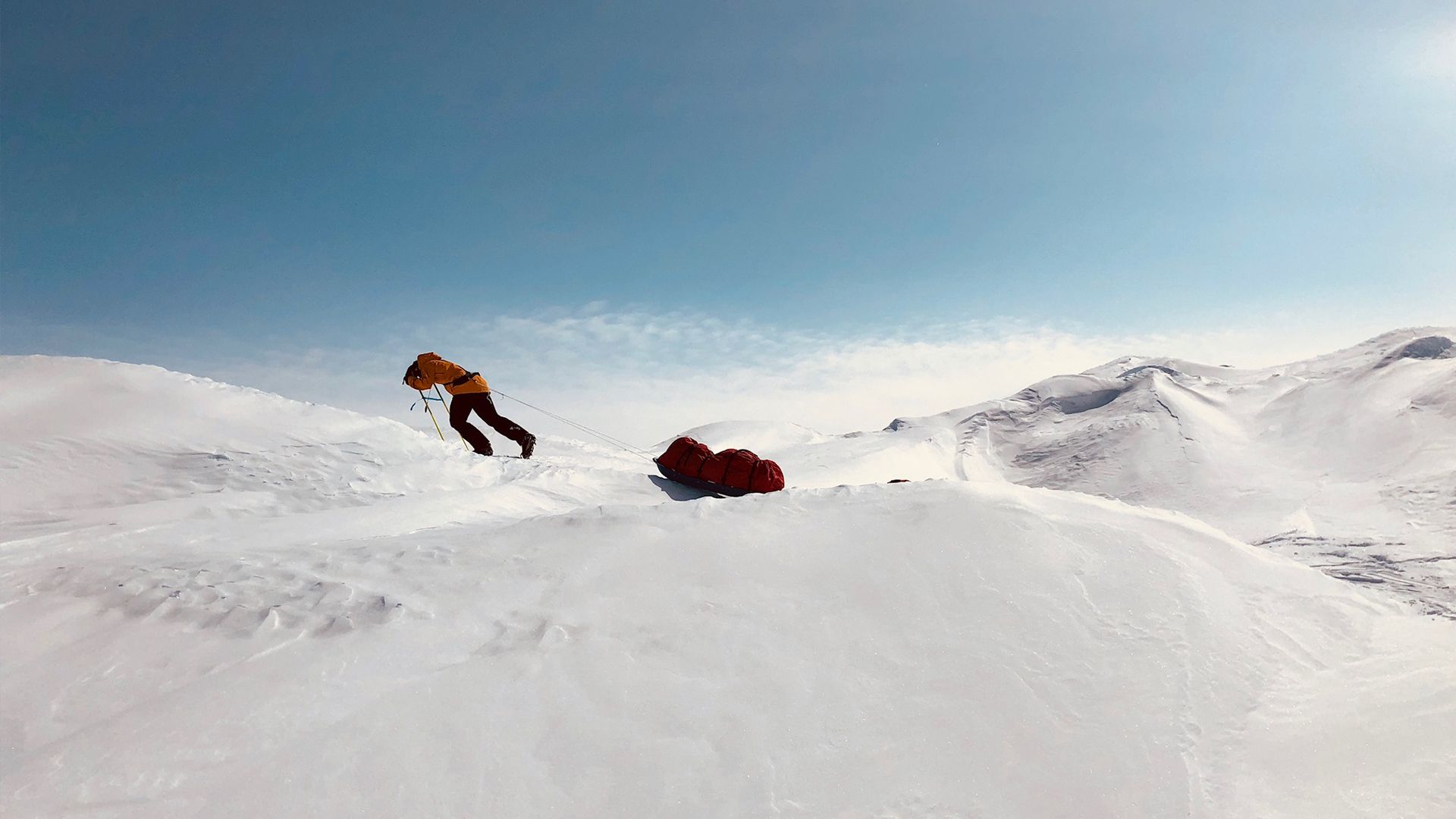
I’m not a journalist nor a story teller, but simply someone with a story to tell. I might not be able to articulate my complex feelings perfectly, so I will just be myself, and be honest.
In May 2018, I crossed Greenland by foot from East to West along the Polar Circle, with 4 other entrepreneurs, in total autonomy. It took us 31 days to cover more than 550km. We faced extreme conditions, with absolutely no form of any life, under temperatures reaching -40C.
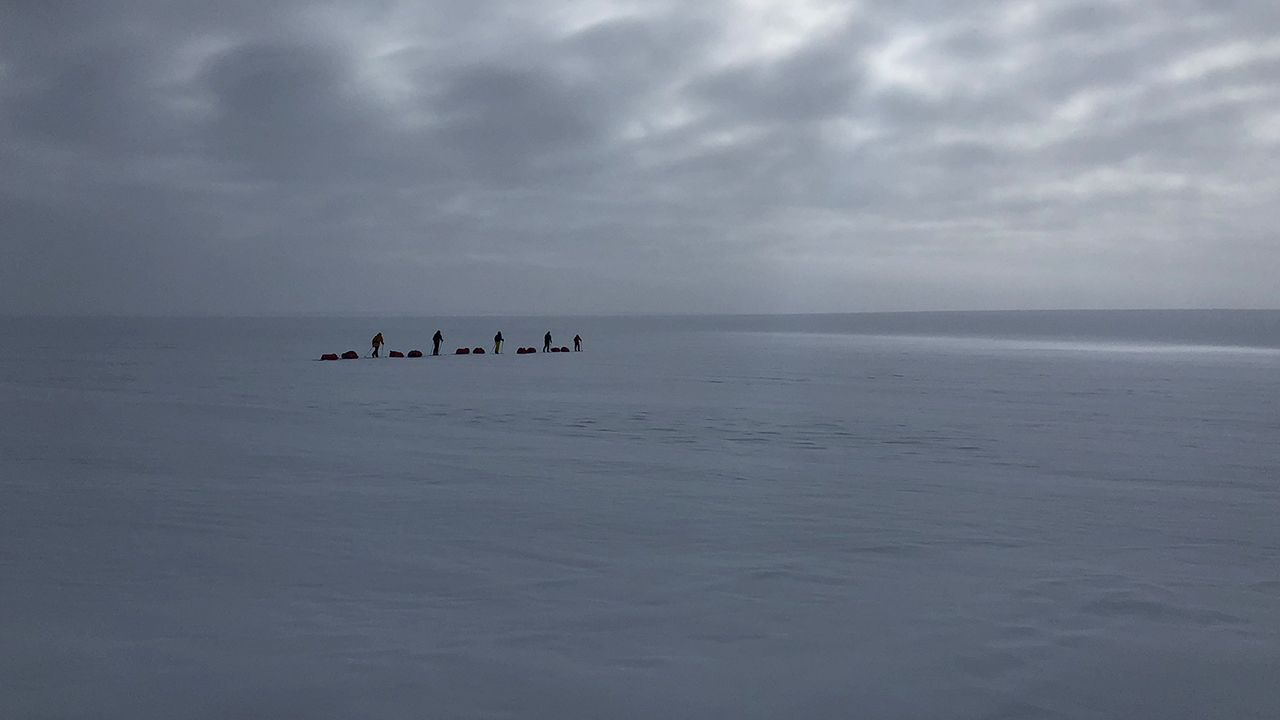
Our daily routine.
We woke up every morning at 5am or 6am. It took us 2 and a half hours to melt the snow, so that we had water for breakfast. We also needed additional 2 litres each for the day. We got left the tent at 8:15am, we packed them up, and we could start walking at around 8:45am or 9am. At first we had to walk at least 8 hours a day, up to 10 hours towards the end, occasionally up to 13 when the weather permitted us. When we stopped walking, it took us 1 hour to set up the camp, and then 3 additional hours to melt the snow so that we could cook, fix things and take care of our feet, before we could finally go to sleep. And then repeat, again, and again, no matter what, because we had to make it to the other side.
I remember how I felt on the first day, excited, impatient and ready (at least that’s what I thought) to face Greenland. Like a kid that can’t wait to play outside. However, Greenland had other ideas, the terrain and weather taught us in its own way, that...
our success would depend on our capacity to remain calm, patient and humble.
The first days of the expedition were "easy". The snow was firm, it was quite sunny, and even if our pulkas were at their heaviest, weighting 90kg per person, we were expecting more of a mental challenge. At that point, it was just another physical challenge.

For the first part of the expedition, we had to walk up to the highest point of the crossing. 2600m, almost half way, albeit a little bit closer to the east coast. After that, there was a flat plateau, continuing at the same altitude for about 100km. Finally, we had to walk down towards the coast, to reach our extraction point on the eastern side at 900m altitude.
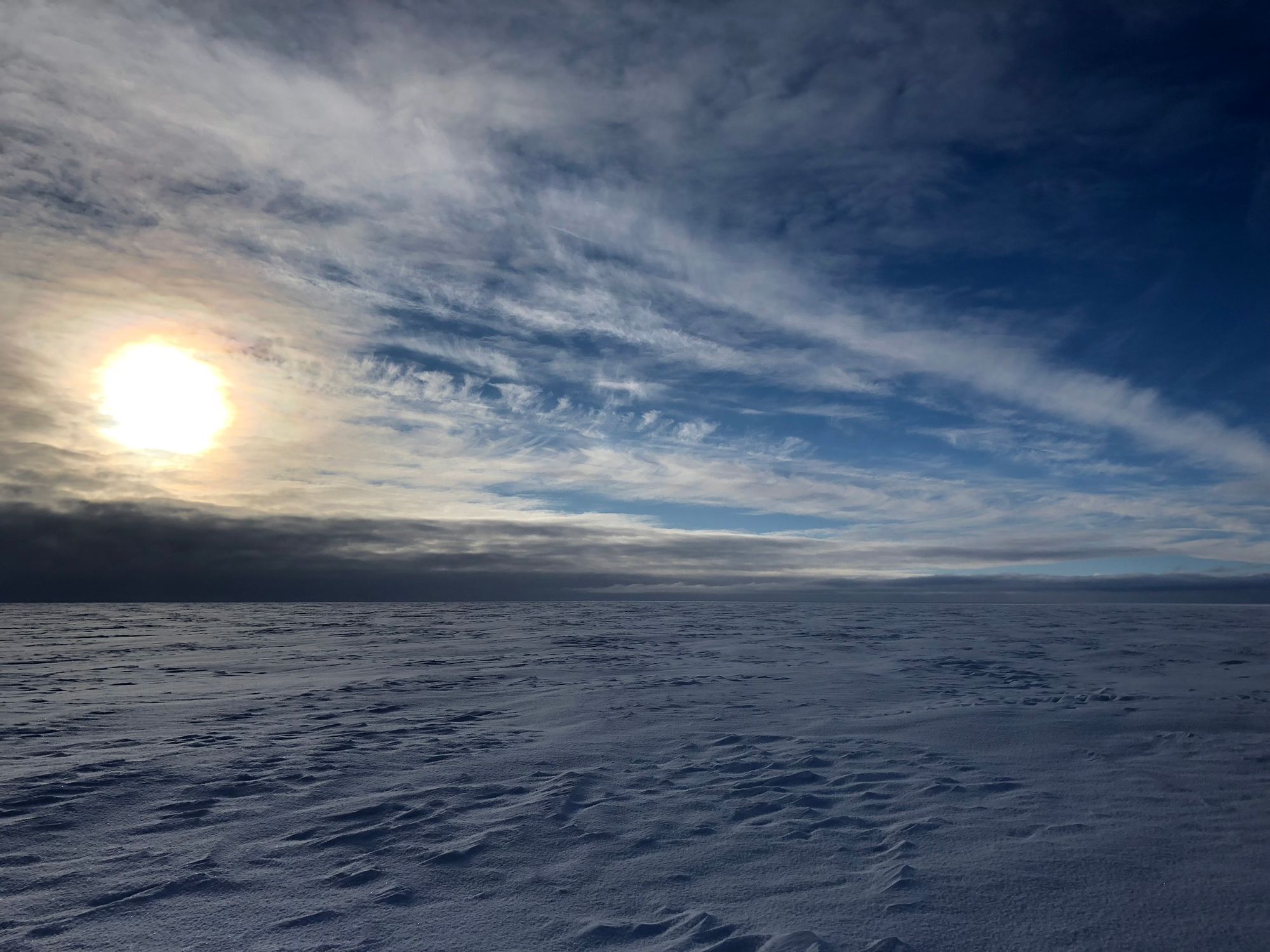
We expected the first part to be the hardest. We were climbing up, and then, as we would walk down, it would get easier and we would be able to cover more kilometres per day.
We were fools, but we didn’t know it yet.
When the first storm hit us on the night of the 11th day, we were almost relieved to spend 60 hours in the tents to get some rest. Even if it was physically intense, we all thought we would be able to get to the other side without any trouble. On the following day, we walked 28 km in 11 hours to reach our first objective, Dye military base located at 66.4934N - 46.3204W. However, at the end of that day 14th, we all started to realize that things were getting more critical. One of us felt pain in his back and knees, so we volunteered to carry some of his weights, in addition to the 90kg we already had to carry per person. As for me, I felt such a pain in my right ankle, that I could barely walk when I took my skis off at the camp.
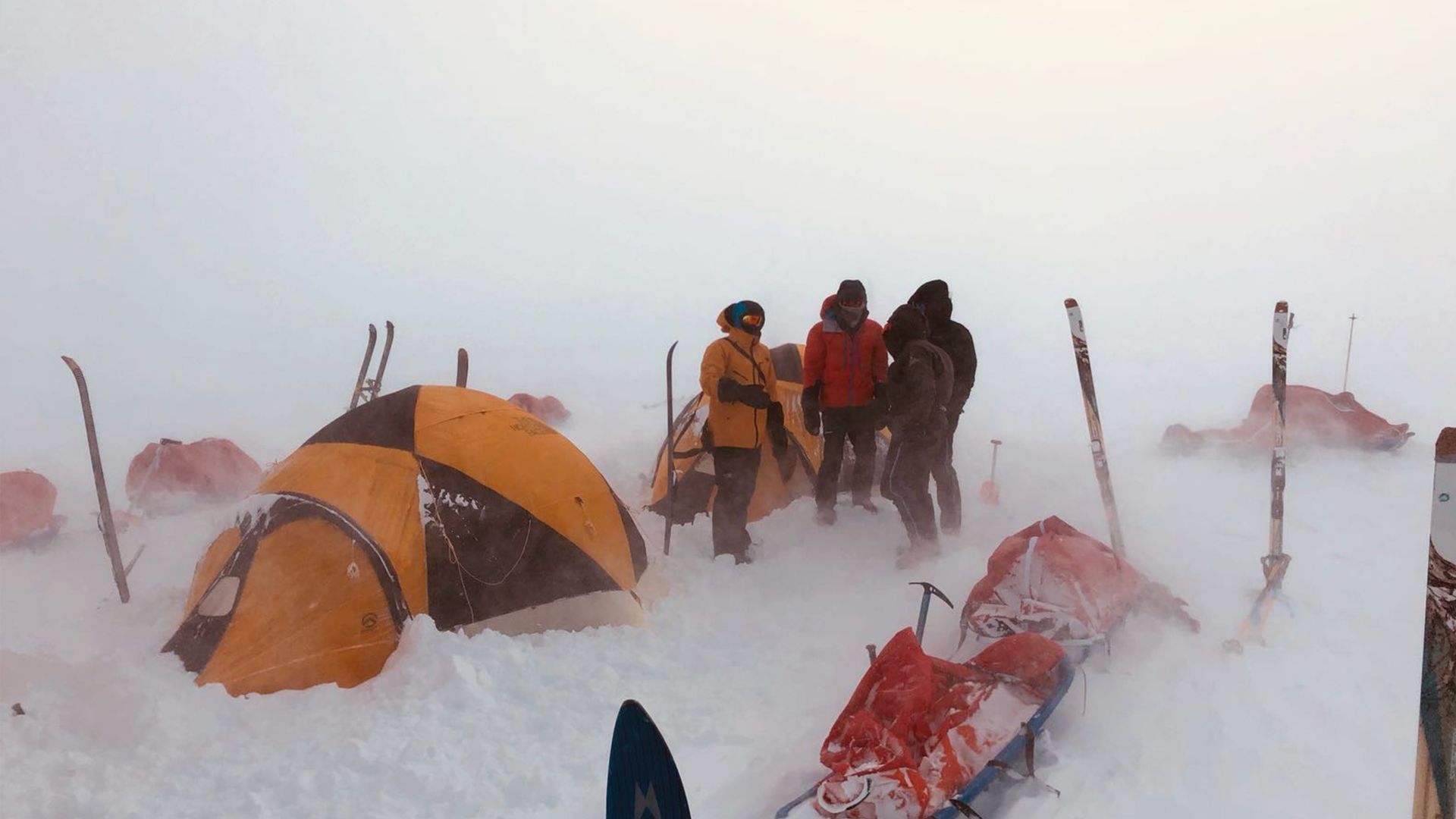
Fortunately, over the next 2 days, we were very limited as to how much we could walk, since there was another storm coming. That 16th day, we just walked 10km for 5 hours. The wind was coming in at more than 70km/h from the south, and caused our pulkas to flip over.
We were definitely going beyond our limits, this was the time to set up the camp, and be safe.
Setting up the camp under those conditions was crazy, but vital, and we managed to do it as a team. Once in the tents, we realised that we had pushed it to far, it had started to become very dangerous. If we could not set up the camp, then we would have just died from the cold. From that very moment, every day was going to be more critical than the day before. We were not even half way through the expedition yet, but we didn’t know it. We did know that our lives depend on our actions, our choices, and on our team. We realised that our bodies are amazing but fragile machines, that nature can break at anytime.
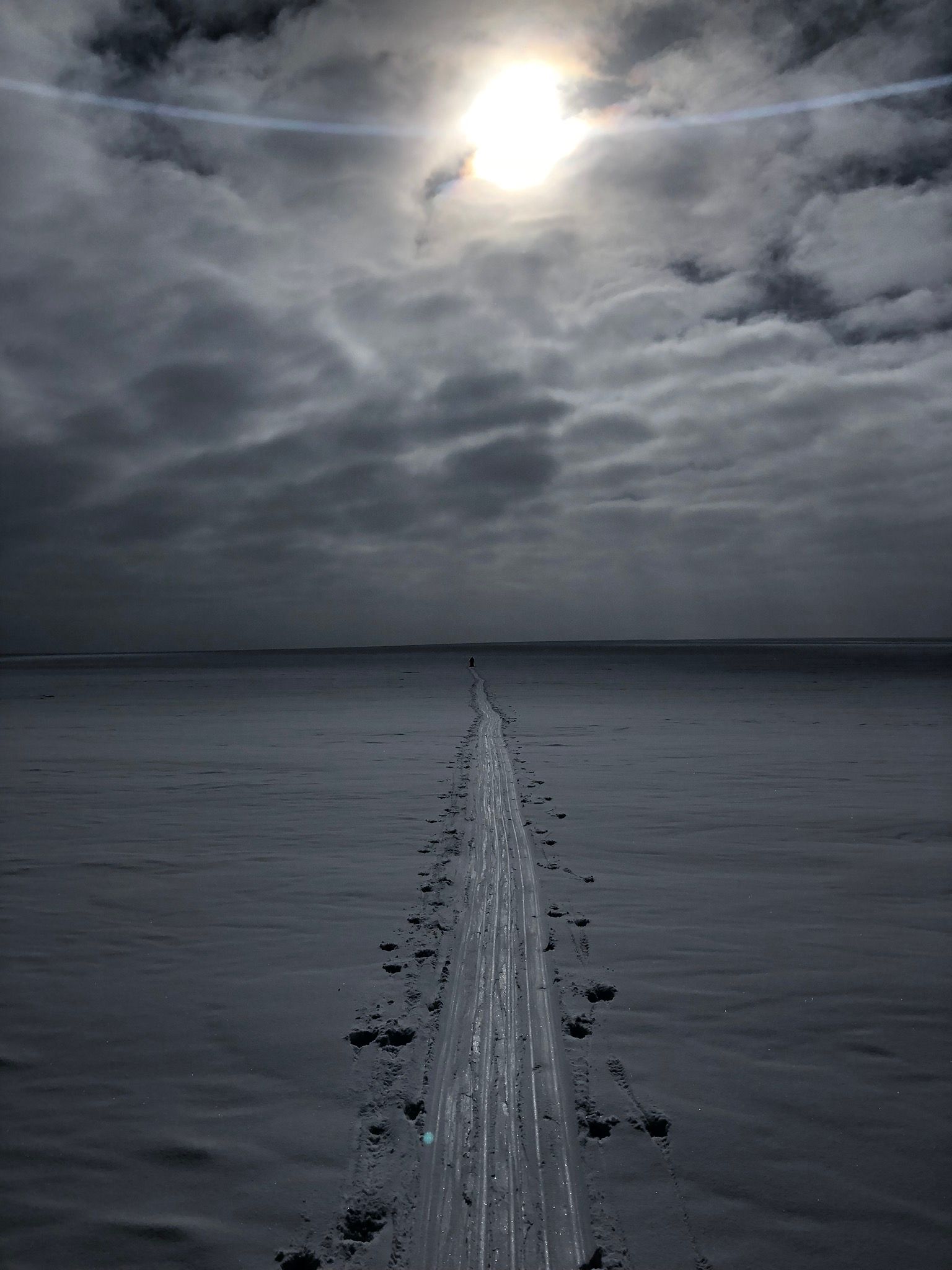
However, the humility that we had already been taught, apparently wasn't enough. The next few days were the coldest, with temperatures between -20C to -40C, and winds reaching 35km/h. We had lost too much time, stuck in the storms, we had to move forward. We were relieved to reach the highest point of the expedition. Finally, we had made it, but at a price. The cold froze my toe, and broke Antoine’s ski plugs. Fortunately we had a spare pair, but from now on, another equipment issue could risk the whole expedition.
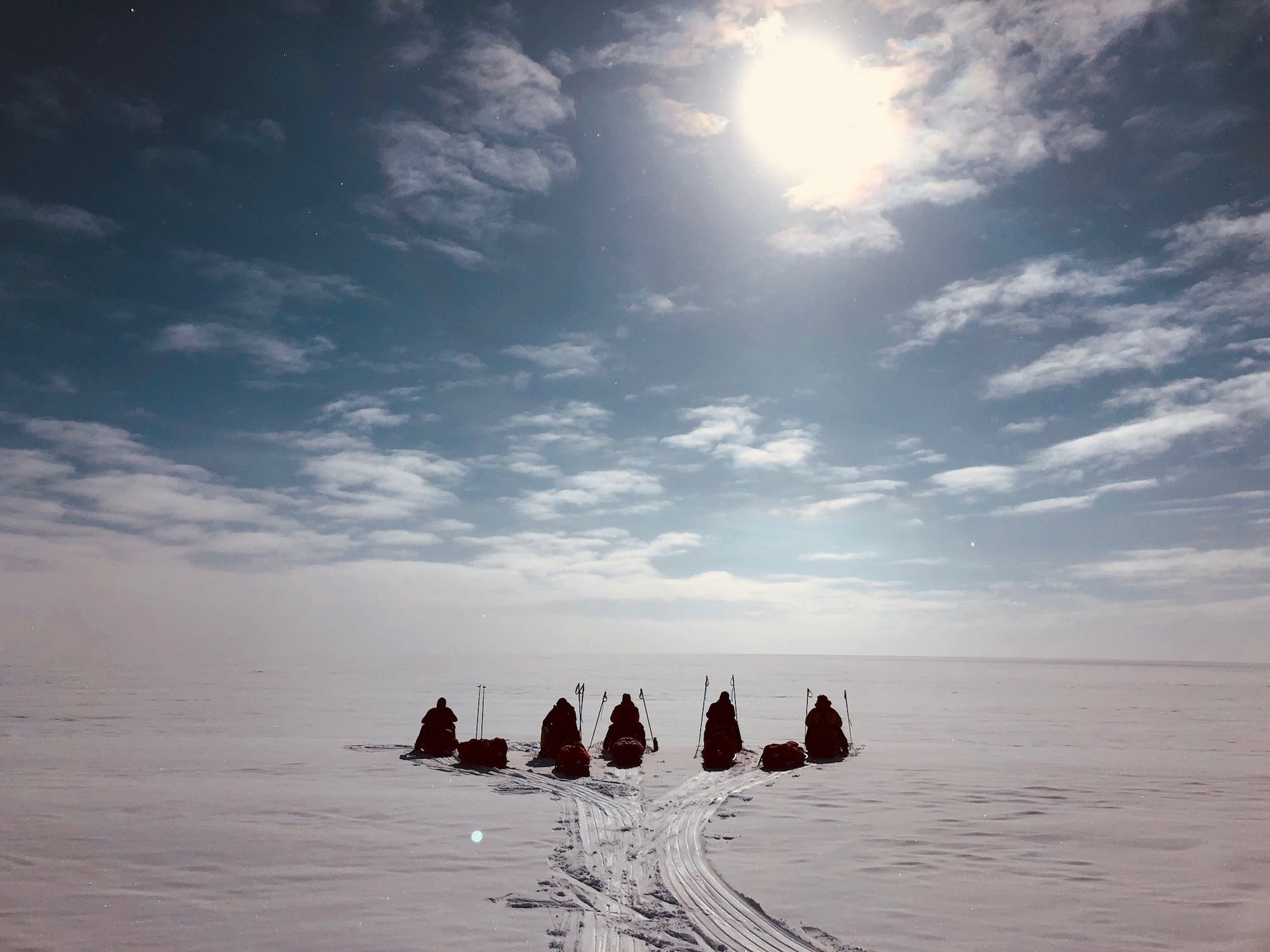
From this point, we we headed downhill and the expectation was that it would get easier. We started to make some calculations and tell ourselves; "if we could walk 10 hours a day at 2.5km/h, then we could reach our objective in x days. On top of that, we're going downhill, we should actually be able to walk 30km to 35km a day, without any additional effort, since we would not feel the weight of our pulkas"… However, Greenland decided to teach us humility one more time.
It started to snow, day after day, after day.
It was physically so intense to walk that deep in the snow, pulling our pulkas was a burden that we had to accept. Each step challenged our body, and our mind. We started to walk 9 to 10 hours a day, but despite our expectations, barely managed to walk the same distance than when we covered when walking uphill.
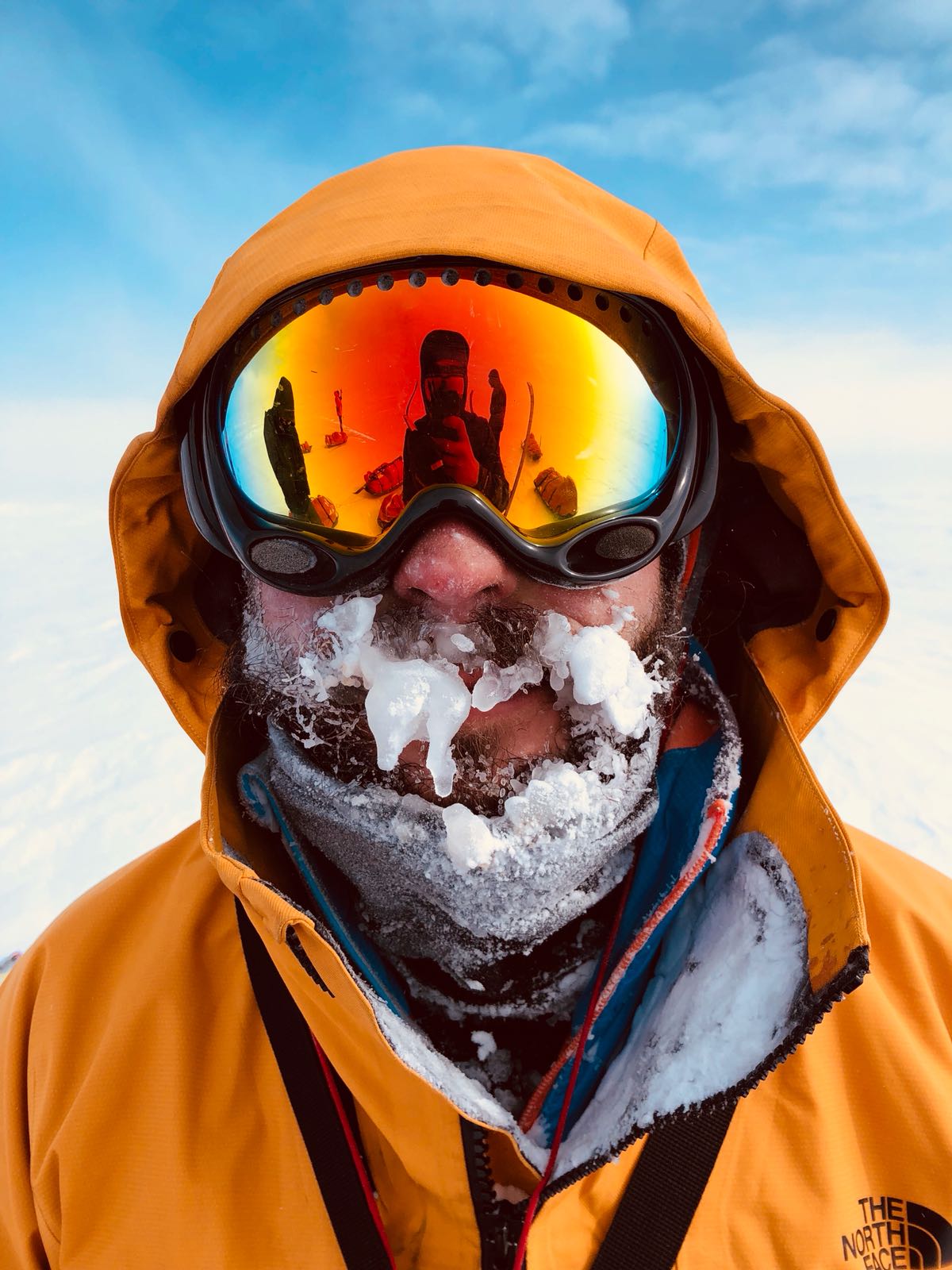
Being tired was not a reason to stop. We told ourselves, tired is just information.
We had to push our limits forward. We had to find energy we didn't know that we had, deep down inside us, or we wouldn’t make it.
At the end of every day, we kept on making the same time vs distance calculations. However, there was always more and more snow every day. Every day the visibility worsened, until we could not see our skis. On the 28th day, we wanted to make 30km, it was important for us to do so. We made it, in 13 hours. We were so tired that when we set up the camp, we were in some sort of zombie state, too tired to even think. On the 29th day, the snow continued to play with our nerves, and we barely walked 6 km in 5 hours. One of us was injured, and could just not push forward.
We were at 20 km from the extraction point, but just 5 km from the coast. We had to make a critical decision. We just had 1 day left of food. At our current pace, we would reach the extraction point within 3 days. We could kept on walking, or set up the camp here, and wait for the helicopter to pick us up tomorrow. We decided to set up the camp, and wait for a clear weather window for the helicopter to come in and get us… The next day arrived, and no one could get to us because of the weather. It was the 30th day, and we were completely out of food. The next clear weather window was in 4 days.
At that very moment, something triggered in our minds.
We were not making any sort of calculations anymore, we were not expecting anything from anyone. We just accepted it. Nature always win. Period.
We just had to smile and face it. Finally, Greenland taught us humility, and we knew it. In the tent, we were just talking, peacefully, calmly. We had to call the pilot every hour to give him some updates about the weather, and every hour he would tell us that we had to wait one more hour. Until the 31st day, in the afternoon, we finally saw the chopper. Accepting our fate felt like the obliged path we had to take, to unlock the door to make our way home.
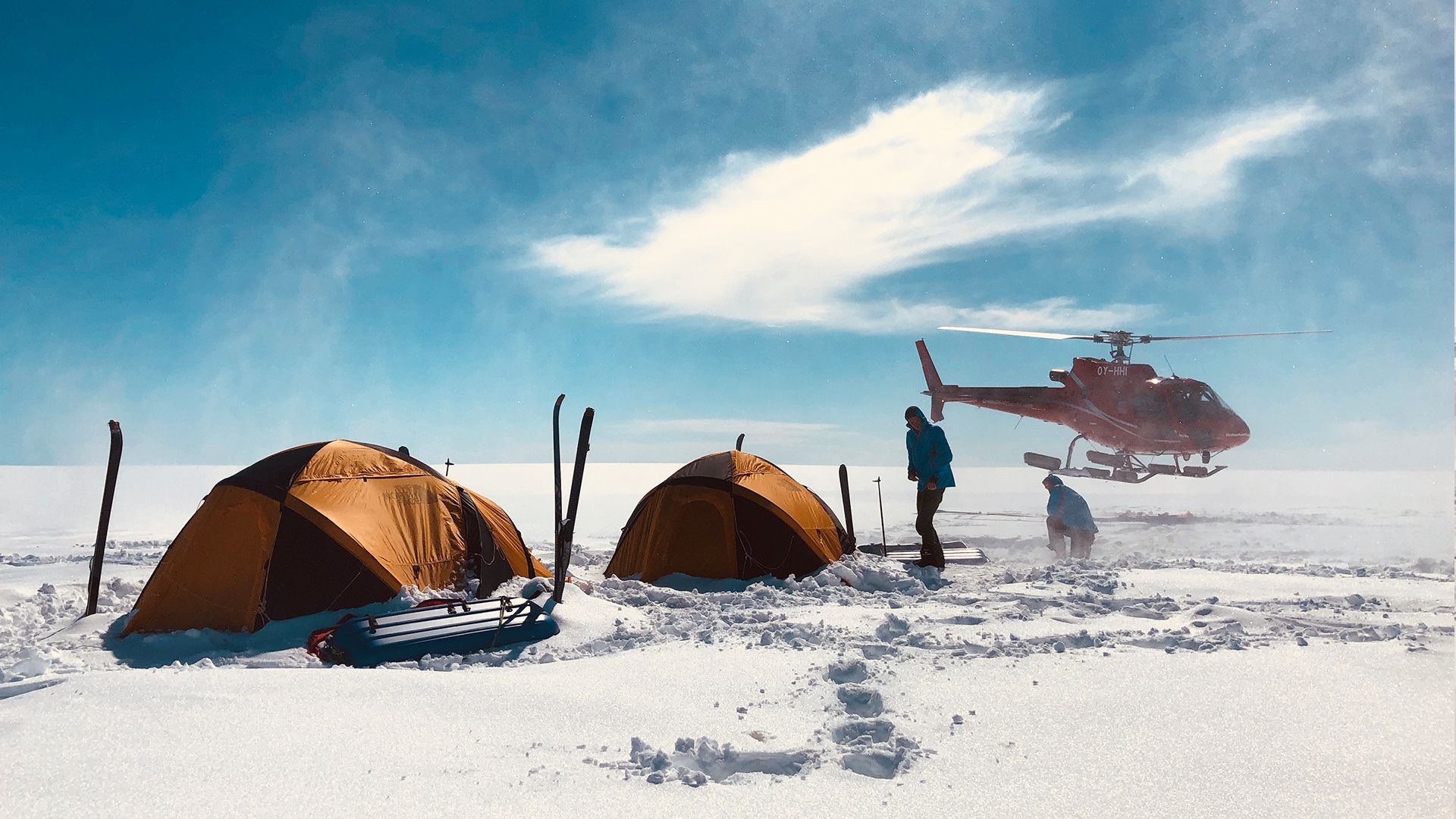
Reflection
It was unexpected that one of the hardest parts of the adventure, was to keeping our minds busy for 10 to 13 hours a day. I realised that I had so much time to think about things I had never considered before.
I would think of my girlfriend, my friends, my family, my startup Weesurf. Then I started to think about myself. I asked, why am I doing this? What kind of life do I want? What makes me truly happy? Why do I do the job that I do? Why do I love this or that? What can I change about myself? And for every question, I kept asking myself, why? For example, why do you want to make money? To buy stuff? But why? To travel? But why? To get a flat? But why? And I finally figured out what kind of life I wanted to follow, and what makes me happy...
Discover, Learn and Share.
I also realised that I used to consider money as something to value things and to set barriers. Something we all have to live for, and to live by, but I ask myself how I lived so many experiences over the last 2 years, and at that time I didn’t get paid by Weesurf. I went to Greenland to pursue my dream with almost no money on my bank account. I put in all my strength and effort, to make it all possible, because that would make me happy. I would discover, learn and share an adventure. No matter what, I would do my best to realise it. Whilst I was walking on the ice, I imagined if everyone would have a passion for his or her project, if everyone would put all of his or her faith and efforts to realise his or her dream, people would probably be happier.
I’m very thankful that Thomas changed my life when he offered me on the Station F’s Slack, to set up a team to cross Greenland. He has made me an happier person. I told myself that I’ll do my best to do the same for everyone else.
So ask I you this. What is your dream? What prevents you from making it real? What are you doing to make it happen? If you’re not struggling enough, maybe it’s not your dream. What is your dream?
Remember, calm, patience, humility.
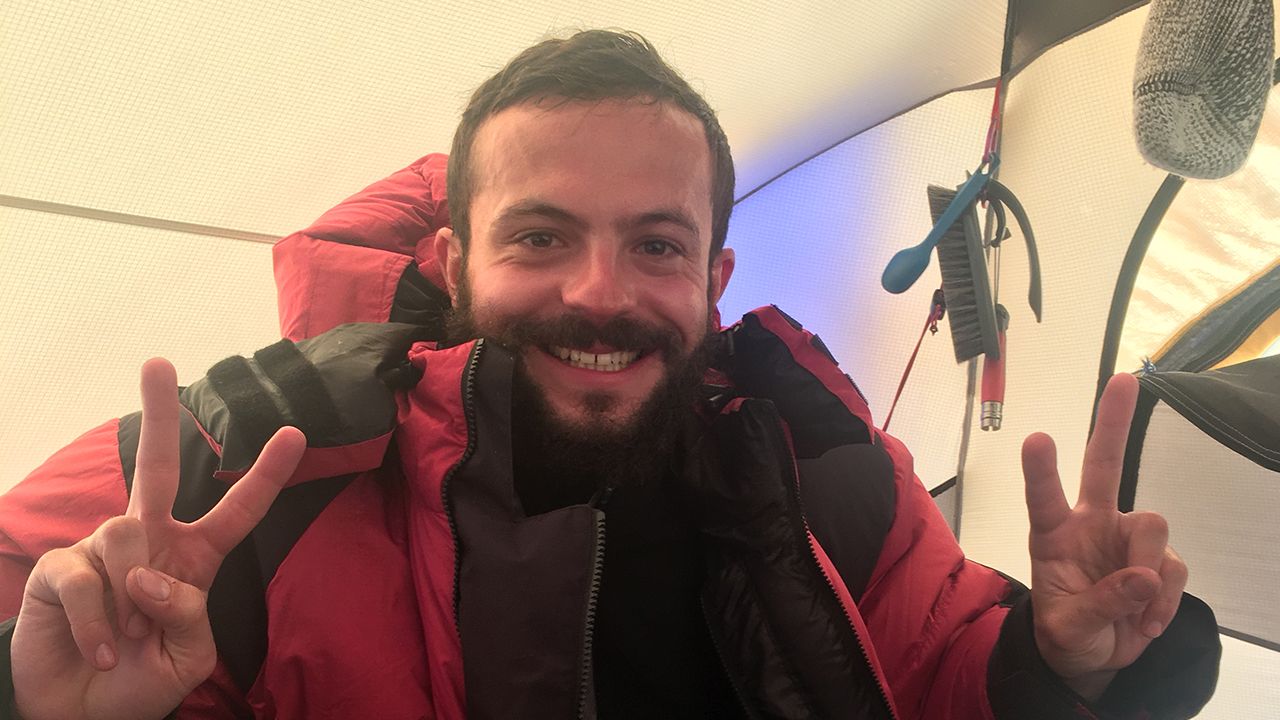
You can discover your own ice sheets in Greenland here with the Outdoor Voyage.
2nd best newsletter in the universe